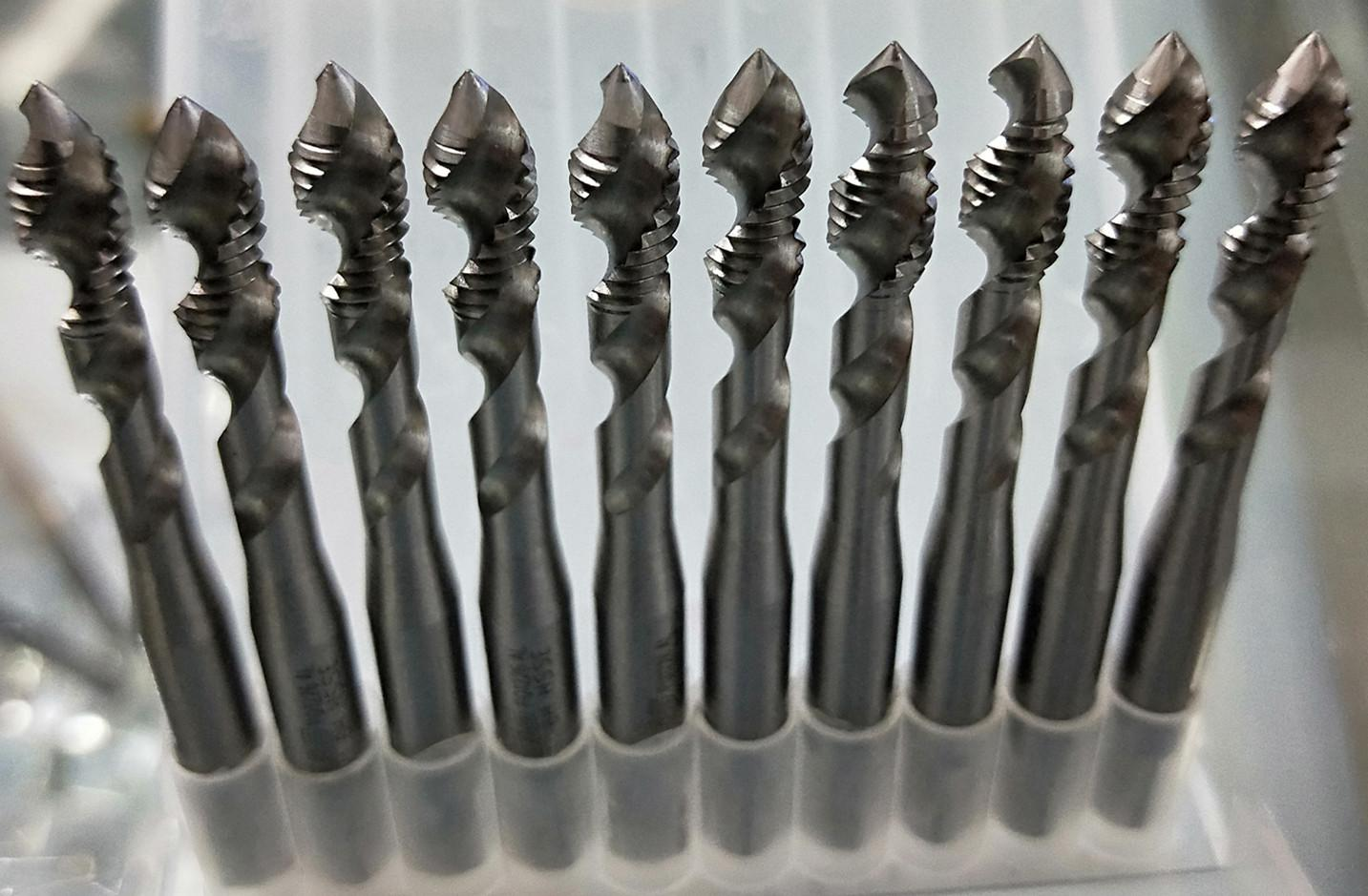In the world of machining and threading operations, spiral point taps stand out as an incredibly efficient and reliable tool. If you’ve ever been involved in creating internal threads in a workpiece, you’ve likely encountered or at least heard of these remarkable taps. In this blog post, we’ll take an in – depth look at spiral point taps, exploring their design, working principles, applications, and why they are favored by machinists worldwide.
Design and Working Principles:
Spiral point taps, also known as gun taps, are designed with a unique spiral – fluted geometry at the point. This spiral flute is not just an aesthetic feature; it plays a crucial role in the tap’s functionality. When the tap is rotated during the threading process, the spiral flutes act like a screw, pushing the chips ahead of the tap as it cuts into the material. This is in contrast to traditional taps, which tend to accumulate chips in the flutes, leading to potential issues such as chip clogging, poor thread quality, and premature tap wear.
The spiral angle of the flutes is carefully engineered. A typical spiral point tap has a helix angle ranging from 30 to 45 degrees. This angle is optimized to ensure smooth chip evacuation, regardless of the material being tapped. Whether it’s a soft metal like aluminum or a hard alloy such as stainless steel, the spiral flutes efficiently guide the chips out of the hole, allowing for continuous and uninterrupted threading.
Another key design aspect is the tap’s cutting geometry. The cutting edges of a spiral point tap are sharp and precisely ground to provide clean and accurate thread cuts. The tap’s body is also made of high – quality tool steel, often heat – treated to enhance its hardness and durability. This ensures that the tap can withstand the high forces and temperatures generated during the threading process, resulting in a long service life.
Applications:
Spiral point taps find applications in a wide range of industries. In the automotive industry, they are extensively used for creating threads in engine components, transmission parts, and suspension components. For example, when threading holes in cylinder heads, which are made of aluminum alloy, spiral point taps ensure fast and accurate thread formation. The ability to quickly evacuate chips is crucial in this application, as any chip residue could potentially cause problems in the engine’s performance.
The aerospace industry also relies heavily on spiral point taps. In the manufacturing of aircraft parts, where precision and reliability are of utmost importance, these taps are used to create threads in various components, such as wing spars, landing gear parts, and engine mounts. The high – strength materials used in aerospace, like titanium alloys, require taps that can handle the tough cutting conditions. Spiral point taps, with their superior chip – evacuation capabilities and durable construction, are well – suited for this task.
In the electronics industry, where miniaturization is the norm, spiral point taps are used to create fine threads in printed circuit boards (PCBs) and electronic enclosures. The small diameter and precise threading requirements in this industry demand a tap that can produce clean and accurate threads without causing damage to the delicate materials. Spiral point taps meet these requirements, making them a popular choice for electronics manufacturers.
Advantages over Traditional Taps:
One of the most significant advantages of spiral point taps is their improved chip evacuation. As mentioned earlier, traditional taps can suffer from chip clogging, which can lead to several problems. Chip clogging can cause the tap to break, resulting in costly downtime and replacement. It can also lead to poor thread quality, with rough or incomplete threads. Spiral point taps eliminate these issues by efficiently pushing the chips out of the way, ensuring a smooth and continuous threading process.
Another advantage is the increased speed of operation. Because spiral point taps can evacuate chips more effectively, they can be run at higher speeds compared to traditional taps. This not only increases productivity but also reduces the overall cost of the threading operation. Additionally, the smooth cutting action of spiral point taps results in less tool wear, which means that the tap can be used for a longer period before needing to be replaced.
Tips for Using Spiral Point Taps:
When using spiral point taps, it’s essential to select the right tap for the job. Consider the material being tapped, the diameter and depth of the hole, and the thread pitch. Using the wrong tap can lead to poor results and premature tap failure.
Proper lubrication is also crucial. Using a high – quality cutting fluid helps to reduce friction, dissipate heat, and improve the quality of the thread cut. It also extends the life of the tap. Make sure to apply the cutting fluid generously to the tap and the workpiece during the threading process.
Finally, pay attention to the tap’s rotation speed. While spiral point taps can be run at higher speeds, it’s important not to exceed the recommended speed for the tap and the material being tapped. Over – speeding the tap can cause it to break or produce poor – quality threads.
In conclusion, spiral point taps are a game – changer in the world of threading operations. Their unique design, efficient chip – evacuation capabilities, and wide range of applications make them an essential tool for machinists in various industries. Whether you’re working in automotive, aerospace, electronics, or any other field that requires precise and reliable threading, spiral point taps are definitely worth considering.

